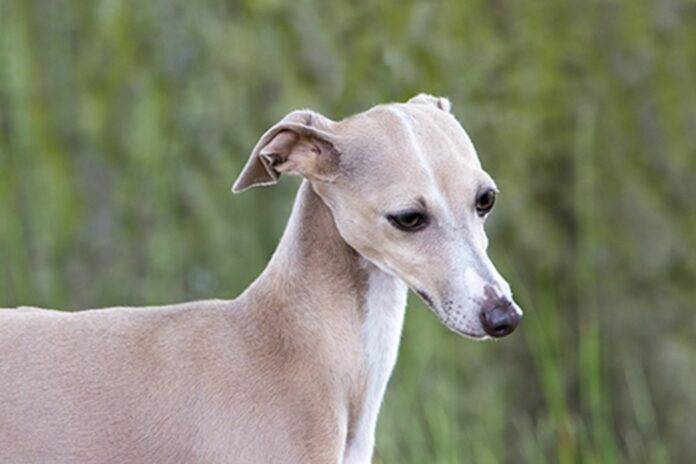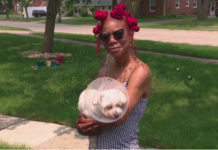Last Updated on September 5, 2022 by Fumipets
If you’re thinking about getting an Italian Greyhound as your next pet, you may be wondering what colours are available.
Whether you’re looking to buy a puppy or adopt an older dog, you probably have a favourite colour in mind.
Italian Greyhounds come in a variety of colours. Black, seal, sable, cream, blue, red, fawn, red fawn, and blue fawn are the standard colours. These colours, with the exception of cream, may be combined with white. In the show ring, however, all colours are allowed, and only two marks are disqualifying.
Of course, a dog’s coat colour is just one aspect of his personality, and any colour Italian Greyhound is a good choice. They’re all fantastic!
Learning more about the different colour options may assist you in making a decision or persuade you that you need more than one Italian Greyhound.
Colours Accepted By The AKC For Italian Greyhounds
Any colours and markings in Italian Greyhounds are permissible, according to the American Kennel Club. However, there are two exceptions.
A dog with brindle markings or tan markings similar to black-and-tan canines of other breeds, such as the Rottweiler, would be rejected in the show ring.
For Italian Greyhounds, there is a long list of acceptable colours and patterns. Certain colours, on the other hand, are considered standard for the breed.
Nonstandard-coloured dogs would be registered as an alternative colour, which is still completely legal.
Black and tan, blue and tan, brindle, chocolate, and white are all common alternate colours.

AKC Standard Colors
Sable — Sable dogs have reddish-brown fur with black tips. Due to the short coats of Italian Greyhounds, the sable appearance may be very appealing.
Seal – Seal dogs have a brown colouring that ranges from almost black to light liver. The back of the dog typically has a black stripe, and the tail and legs are darker than the rest of the coat.
Black – Black Italian Greyhounds are difficult to come by and have a sleek look.
Blue – Blue colouring is a dilution of black that creates an almost metallic blue-grey appearance.
Fawn – Fawn is a tan colour with a darker back and a black muzzle on occasion.
Crimson deer – Red fawn has a red tinge to its darker colouring on the back and occasionally on the legs.
Blue fawn – Blue fawn has the same tones as normal fawn, but it has a blue tinge to it.
Red – Red Italian Greyhounds are a deep, rich shade of brown that is extremely red.
Cream – Cream is a softer and paler version of the fawn colour.
Except for cream, any of these basic colours can be combined with white in any design.

Common Patterns
Solid – Greyhounds with solid colouring are all the same colour, but it may be darker or lighter on different areas of their bodies. While they are still considered solid, they may have some white on the bottom of the breast, belly, or feet.
Irish — This is a white design with a white collar that does not extend all the way down the legs or onto the head.
Wild Irish – This is an Irish pattern with white portions that extend higher up the dog’s neck and body.
Pied – For Italian Greyhounds, this is one of the most frequent patterns. On a white backdrop, splashes of any hue emerge. Colour flashes may be big or tiny, and they can appear anywhere on the body.
Red with a black mask – This is a red fawn with such a prominent black mask that it might be called a pattern.
Split face – This is a unique variant of the pied pattern. Pied dogs often have a solid or whitehead or spots on their face, rather than a divided face.
Why Are Brindle And Tan Markings Disqualifications?
It may be difficult to comprehend why certain colours and patterns are permitted by the AKC while others are not.
Colours are often rejected because they may indicate crossbreeding.
It’s unclear if this is true for Italian Greyhounds with brindle and tan markings, but it’s a possibility.
The Whippet, the Italian Greyhound’s bigger relative, is often brindle.
Miniature Pinschers and Manchester Terriers have comparable body types to Italian Greyhounds and are nearly invariably black and tan in colour.
During the development of the breed standard, most Italian Greyhounds were not discovered to be brindle or black and tan.
The AKC may have concluded that removing these markings from the breed standard will encourage breeders to remain loyal to the Italian Greyhound and not add other breeds to the mix.

Does An Italian Greyhound’s Color Change?
Colour change in Italian Greyhounds is possible as they grow. Puppies’ basic colour may darken or lighten with time.
Italian Greyhounds, on the other hand, do not change colour substantially during their lives.
An Italian Greyhound, on the other hand, may become bald depending on its coat colour (yes, you read that correctly).
Color Dilution Alopecia
Colour dilution alopecia is a disorder that affects dogs with dilute pigment, which is common in blue dogs.
Many breeds with pale colouring, such as the Italian Greyhound, have this hereditary trait.
Because their noses, lips, and eyelids are typically flesh coloured, blue, lavender, or bluish-grey instead of black, these dogs are readily distinguishable from completely pigmented ones.
The coat will be light in colour, often a shade of blue, tan, or golden.
Between the ages of 6 months and 3 years, the dog will begin to lose hair, particularly in regions with diluted colour.
It usually runs along the centre of the back, leaving the limbs, tail, and head completely hairless. Some people will become completely bald.
White regions of piebald animals may be unharmed, whereas dilute pigmented areas may lose hair.
Italian Greyhound Coats
The coats of Italian Greyhounds are silky and smooth, and they are very short. The insides of the legs and the stomach of your dog’s coat may get thinner as he grows older.
Their coats are very simple to care for and do not need regular bathing.
The Italian Greyhound is a great option for anybody looking for a tiny dog with a low-maintenance coat that doesn’t need regular brushing or cleaning.

Most Popular Italian Greyhound Coat Colors
The colour blue is one of the most preferred coat colours for Italian Greyhounds. This colour is distinctive and intriguing to many people.
Italian Greyhounds with blue colouring are more prone to get colour dilution alopecia since blue is a dilute version of black, therefore you should carefully evaluate if owning a blue Greyhound is worth the risk.
If you have your heart set on a blue Italian Greyhound, you should consider adopting one that is at least three years old, since the illness process will most likely have already begun if it was going to happen.
Red is the predominant colour in Italian Greyhounds, making it a highly popular colour in the breed that carries no danger and is yet very fascinating.
A black Italian Greyhound is extremely attractive and popular if you can locate one.
For the first few weeks of a dog’s existence, determining if it is really black may be challenging. Seal-coloured dogs are much more frequent than black-coloured dogs.

Related Questions:
Do Italian Greyhounds Shed?
Although Italian Greyhounds have a short coat, their coat grows rapidly and sheds more than one would anticipate for such a tiny short-haired breed.
Because there is no undercoat, shedding isn’t as bad as it is with heavy-coated dogs, but you’ll probably notice a lot more shed hair in the spring.
Do Italian Greyhounds Smell Bad?
Because Italian Greyhounds’ oil glands aren’t particularly active, they don’t have a lot of odour.
You won’t be able to detect a scent from your Italian Greyhound unless they manage to roll in anything smelly.
As a result, Italian Greyhounds do not need frequent washing. In fact, bathing them with soap may dry up their skin, so only use soft warm water to wash them.
Do Italian Greyhounds Come In The Same Colors As Whippets And Greyhounds?
The AKC standard colours for Whippets and Greyhounds are both longer than those for the Italian Greyhound.
However, all colours are deemed appropriate in all three breeds, so you’re likely to discover exactly what you’re searching for in any of them.


















